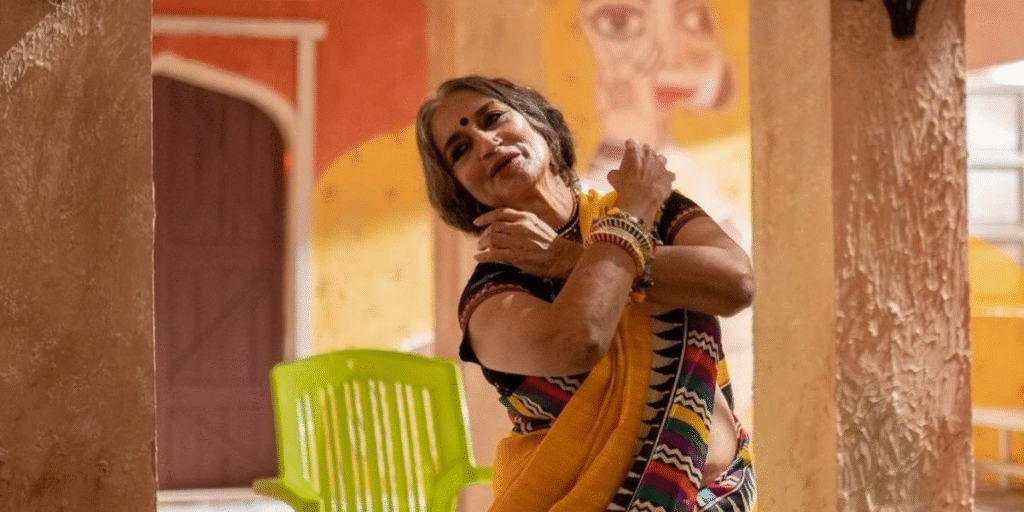“Pakistan which was created in the name of Islam will continue to survive only if it sticks to Islam. That is why I consider the introduction of [an] Islamic system as an essential prerequisite for the country.” – Muhammad Zia-ul-Haq
As the 6th president of Pakistan, Muhammad Zia-ul-Haq became notorious for his Islamization of Pakistan, taking numerous drastic measures during his 11-year tenure. In 1985, three years before his presidency ended, he declared the garment sari inappropriate and un-Islamic. The president would prohibit it for “government personnel and television presenters while discouraging ordinary” citizens from wearing it. He would also ban dance and non patriotic music. Though saris were once familiar in the Karachi and Sindh provinces and dance and music were deeply embedded in Pakistani culture, the same could not be said after Zia-ul-Haq’s presidency.
However, in an astonishing act of retaliation against the Pakistani president’s bans, in 1985, singer Iqbal Bano wore a black sari and sang the Faiz Ahmad Faiz poem “Hum Dekhenge.” She would become the inspiration of many, including Aliza Hussain, the 26-year-old founder of The Saari Girl, Pakistan’s first online and in-studio sari store.
Hussain, who recognized how President Muhammad Zia-ul-Haq’s ban led to saris being an extreme rarity in Pakistan, decided to take matters into her own hands and make saris available to the Pakistani public. In an interview with Reader’s Digest, she noted how the ban erased saris from Pakistan despite the Partition being a partition of land, not clothing forms. She also noticed how, because of Zia-ul-Haq’s ban, Pakistanis developed a notion that saris were more a part of Indian culture, making Pakistani women feel they should not wear them despite saris being predominant in both cultures before the ban.
As for the ban on performing arts in Pakistan, it would lead numerous talents to leave the country. As Sheema Kermani stated in an interview with Samaa TV in 2016, “It was a very difficult time for all of us to live through. As far as performing arts was concerned, all dance was banned. And the women who were in the arts bore the harshest brunt of it all. They were the most targeted. So when all this started happening, everyone began leaving the country. There was a mass exodus of talent from here.” The ban would cause “a whole generation [to go] untrained and uninformed about dance and music,” as written by Farah Yasmeen Shaikh. Though the stigma of dance being un-Islamic remains, as does with the sari, Pakistanis have returned to dancing, with younger generations more willing to learn Kathak and other traditional art forms.
These events bring us to “Pasoori,” the headlining image of this article. In the song “Pasoori,” Sheema Kermani, the dancer quoted in the above paragraph, is depicted dancing while wearing a yellow sari. While many appreciated the dance and her seniority, there is much more to her story than one musical appearance at 72. Kermani was one of the many Pakistani dancers affected by President Muhammad Zia-ul-Haq’s bans. While most fled or stopped practicing their arts, Kermani remained the only dancer in Pakistan for the duration of the ban. She continued learning and taught many students throughout her life, even telling the media nobody can stop music and dance after performing a dhamal the day after a suicide bombing in 2017. She also started ‘Tehrik-e-Niswan,’ advocating for women’s rights. Her most recent covered performance is “Pasoori.”
With 644 million views, “Pasoori” is a mainstream Pakistani song that has touched the hearts of many with its intricate Punjabi and Urdu lyrics. Sheema Kermani’s performance is an admirable act against the bans the dancer had to live through, as she wanted to use the song as a medium to connect with Pakistan’s younger generations regarding traditional dance. President Muhammad Zia-ul-Haq’s prohibitions continue to affect Pakistani culture today, as saris and dance continue to be stigmatized in the eyes of the public. While the origins of these prohibitions have not always been remembered, many can notice their effects. For dancers like Sheema Kermani and entrepreneurs like Aliza Hussain, even a four-minute performance and one sale on a sari is a step towards bringing Pakistani culture back from the bans the government had stowed it under.
Works Cited
Ghani, Amel. “Performing Art: ‘Zia’s Ban on Dance Made It Political.’” The Express Tribune, 17 May 2015, tribune.com.pk/story/888038/performing-art-zias-ban-on-dance-made-it-political.
Qaiyum, Samia. “How One Gen Z – ER Is Bringing Back the Sari in Pakistan.” Reader’s Digest, 16 Mar. 2023, www.readersdigest.co.uk/lifestyle/fashion-beauty/how-one-gen-z-er-is-bringing-back-the-sari-in-pakistan.
Qaiyum, Samia. “PAKISTAN’S GEN Z IS BRINGING BACK THE SARI. HERE’S WHY IT MATTERS.” FairPlanet, FairPlanet, 19 Aug. 2023, www.fairplanet.org/story/saree-design-women-pakistan-india/.
Shaikh, Farah Yasmeen. “Gaining Perspectives, Changing Perceptions: ARTICLE #1: How Politics and Power Shaped Dance in Pakistan.” Dancers Group, 1 Dec. 2016, dancersgroup.org/2016/12/politics-power-dance-pakistan/.
